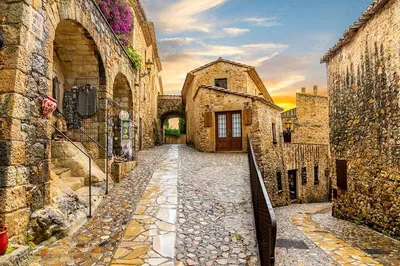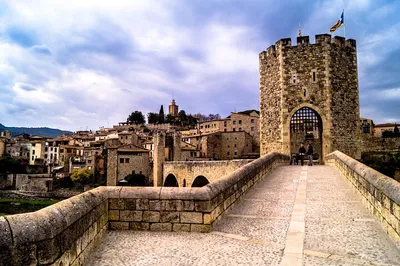Barcelona Gothic Quarter Walking Tour: Uncover Hidden History
155
Overview
Introduction to Barcelona Old Town Gothic Quarter Walking Tour lets people discover the heart of Barcelona. This walking tour shows 2,000 years of Barcelona’s history. A local guide tells stories about the city's past and present. The tour explores hidden spots and famous places in the Gothic Quarter. It's a great way to learn about Catalan culture and get tips for visiting the city.
During the tour, people will see places like Barcelona & Catalonia Tailored Tour, Edifici de Correus (Old Town Post Office), El Cap de Barcelona, and Santa Maria del Mar. They'll also visit El Pont del Bisbe (Bishop's Bridge) and Casa de l’Ardiaca. Other key stops include Ajuntament de Barcelona (City Hall), Casa Padellàs, and Palau de la Generalitat. People will also see Aqüeducte Romà (Roman Aqueduct) and Font dels Senyors.
The tour includes a small group of 10 people, so everyone can ask questions and talk to the guide. The guide gives tips on places to eat and things to do. People will also learn how to avoid tourist traps. The tour does not include food, drinks, or transportation. It also doesn't include souvenirs or tips for the guide.
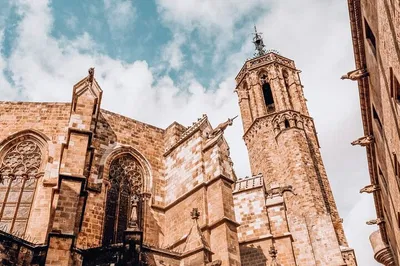
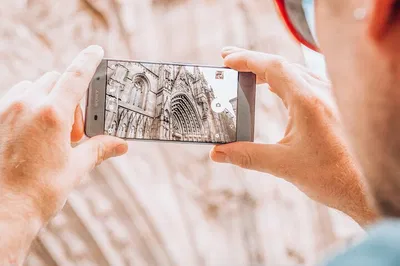
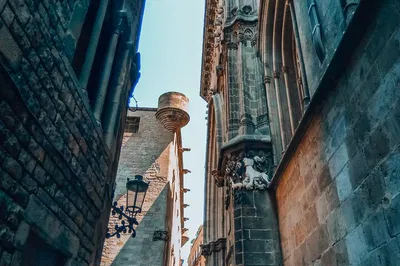

Highlights
Explore Barcelona's Gothic Quarter: Discover hidden streets and historic sites in the heart of Barcelona.
Small Group Experience: Enjoy a personal tour with a maximum of 10 people.
Expert Local Guide: Learn about Barcelona's history and culture from a knowledgeable local.
Insider Tips: Get recommendations for the best places to eat, drink, and explore.
Sentiment Analysis
Customers generally loved the tour for its engaging guides, historical insights, and personal feel. Some suggest clearer meeting point instructions and more time at landmarks.

Visitors enjoyed learning about the Gothic Quarter's history from knowledgeable guides.
Many found the small group size allowed for a more personal and engaging experience.
Customers appreciated the guide's recommendations for local restaurants and attractions.
The tour provided a good overview of Barcelona's culture and helped visitors orient themselves.
Some participants felt the tour could have included more time at specific landmarks.
A few reviewers mentioned difficulty finding the meeting point.
The Journey
Barcelona & Catalonia Tailored Tour
Step beyond typical sightseeing with a personalized tour that delves deep into the culture of Barcelona and Catalonia. What sets this experience apart is its adaptability; each tour is crafted based on your unique interests, the season, day of the week, and even the weather, ensuring an immersive and authentic exploration of the region. Discover hidden gems and local secrets that standard itineraries miss, guided by experts passionate about sharing the soul of this vibrant destination.
Edifici de Correus (Old Town Post Office)
Begin your Barcelona adventure at the Edifici de Correus, a stunning example of early 20th-century Spanish eclectic architecture. More than just a meeting point, this former post office, with its classical columns, ornate sculptures, and grand staircases, serves as a symbolic gateway into the city's 2,000-year history. Located in the heart of the Old Town, it's the perfect place to start your tour and step back in time to explore Barcelona's rich heritage.
El Cap de Barcelona
Marvel at El Cap de Barcelona, Roy Lichtenstein's vibrant tribute to Barcelona created for the 1992 Olympics. This massive, colorful head, constructed from concrete and ceramic mosaic, pays homage to Spanish modernism, particularly Miró and Picasso. Its playful, cartoonish design adds a touch of whimsy to the city's waterfront, symbolizing Barcelona's embrace of the modern, the bold, and the occasionally weird. Whether you love it or hate it, El Cap marks a turning point in Barcelona's history, signaling the city's renewed confidence and global outlook.
Santa Maria del Mar
Experience the profound community spirit embodied in Santa Maria del Mar, a stunning Gothic basilica funded by local merchants, sailors, and stonemasons in the 14th century. This 'church of the people' stands as a testament to their devotion and resilience, evident in its soaring interior and the carved figures of porters on the entrance. Admire its fortress-like exterior, reflecting the protection faith offered to those whose lives depended on the Mediterranean. Despite earthquakes, fires, and wars, Santa Maria del Mar remains a symbol of Barcelona's enduring spirit.
El Pont del Bisbe (Bishop's Bridge)
Discover the enchanting El Pont del Bisbe, a neo-Gothic bridge that appears to have stood since the Middle Ages, yet was built in 1928. Designed by a disciple of Gaudí, Joan Rubió i Bellver, this beloved bridge connects two government buildings in the Gothic Quarter. Admire its intricate stonework and photogenic charm, but don't miss the dark twist: a skull pierced by a dagger hidden beneath the bridge, adding a touch of Gothic flair to this theatrical street. A blend of history and storytelling, El Pont del Bisbe is a must-see in Barcelona.
Casa de l’Ardiaca
Explore the Casa de l’Ardiaca, an elegant building beside the cathedral with a rich history. Once a Roman house and later an archdeacon's residence, it now houses the city's historical archive. Admire the peaceful courtyard and its blend of Gothic elements. Don't miss the modernist mailbox designed by Domènech i Montaner, featuring birds, ivy, and a turtle, symbolizing the slow pace of bureaucracy. Casa de l'Ardiaca captures Barcelona's unique blend of history, art, and civic sarcasm.
Ajuntament de Barcelona (City Hall)
Stand before the Ajuntament de Barcelona, the city's neoclassical City Hall, located across from the Palau de la Generalitat in Plaça de Sant Jaume. Representing the municipal government, the Ajuntament's facade showcases symmetry and stone confidence, while its interior reveals a blend of architectural styles. Observe the city's coat of arms and the flags above, reflecting the political mood of the moment. This layered reflection of civic pride and resistance marks where Barcelona governs itself and where many of its biggest celebrations and protests unfold.
Casa Padellàs
Marvel at the Casa Padellàs, a 15th-century mansion with a story as unique as Barcelona itself. Dismantled and moved in the 1930s to save it from demolition, it now houses part of Barcelona's History Museum (MUHBA). From the outside, glimpse the lives of the city's former elite through stone balconies and inner courtyards. More significantly, it sits atop the ruins of Roman Barcino. Casa Padellàs exemplifies how Barcelona actively rearranges its past to keep its story alive.
Palau de la Generalitat
Discover the Palau de la Generalitat, the political heart of Catalonia for over 600 years. As the seat of the Catalan government, this building reflects the region's rich history and enduring spirit. Admire its Renaissance facade and the figure of Saint George above the entrance, a symbol of Catalan identity. Facing the Ajuntament (City Hall) across Plaça de Sant Jaume, it represents the dynamic relationship between the city and the region, a key aspect of Catalan history.
Aqüeducte Romà (Roman Aqueduct)
Seek out the modest remains of Barcelona's Roman aqueduct, hidden in plain sight near Plaça Nova. Built nearly 2,000 years ago, this aqueduct once supplied water to the Roman city of Barcino. The short reconstructed stretch arches toward a modern building, a poignant reminder of the city's evolution. Spotting these ancient stones offers a glimpse into Roman engineering and the invisible systems that sustained ancient urban life.
Font dels Senyors
Discover the hidden charm of Font dels Senyors, a small Gothic fountain tucked away near Plaça del Rei. This 'Fountain of the Lords' offers a glimpse into the everyday life of medieval Barcelona, originally part of the water system for noble residences. Observe the wear from centuries of use and imagine the daily rituals it once facilitated. In a city filled with grand monuments, this humble fountain reminds us of the essential role water played in the lives of all, even lords.
Els Tres Frisos de la Mediterrània
Encounter the bold public artworks of Els Tres Frisos de la Mediterrània, designed by Pablo Picasso and carved by Carl Nesjar in the 1960s. Adorning the walls of the Architects’ Association building across from the cathedral, these concrete friezes depict playful Mediterranean themes in a brutalist style. While controversial, they represent Barcelona's daring spirit, refusing to blend in and provoking thought even from the steps of the cathedral.
Capella de Santa Àgueda
Explore the Capella de Santa Àgueda, a 14th-century chapel beside the Palau Reial Major, once used by royalty for private worship. This Catalan Gothic chapel, dedicated to Saint Agatha, features tall, narrow windows and a simple façade. Although typically viewed from the outside, it houses Jaume Huguet's Epiphany Altarpiece, a Gothic masterpiece. Wedged into the royal square's architectural puzzle, it highlights the interwoven relationship between power, religion, and architecture in medieval Barcelona.
Monument als Castellers
Witness the dramatic Monument als Castellers, a sculpture capturing Catalonia’s iconic tradition of human towers. This resin sculpture depicts the moment the 'enxaneta' crowns the tower, symbolizing strength, trust, and precision. Observe the detailed faces and limbs, capturing the tension and unity required to build these daring human structures. This monument stands as a powerful emblem of Catalan identity, balance, and cooperation.
Palau Reial Major
Step into the heart of medieval Barcelona's power at the Palau Reial Major, the former residence of the Counts of Barcelona and Kings of Aragon. This complex of buildings, added over centuries, includes the Saló del Tinell with its vast Gothic arches and the Mirador del Rei Martí watchtower. Admire the palace from Plaça del Rei, where Columbus may have met Ferdinand and Isabella after his first voyage, and imagine the wars, treaties, and coronations witnessed within these historic walls.
La Muralla Romana (Roman Wall)
Walk alongside the remnants of La Muralla Romana, the Roman wall built in the late 3rd and early 4th centuries CE to enclose the city of Barcino. Observe the massive stone blocks, carefully fitted without mortar, and spot reused inscriptions and column fragments. This wall, a symbol of Roman strength and civic pride, has been layered over and reused throughout history, yet it endures as a powerful reminder of Barcelona's ancient roots.
Faroles Modernistes de Gaudí (Gaudí's Streetlamps)
Discover Gaudí's first work, the elegant streetlamps in Plaça Reial. Designed in 1879, these cast-iron lamps feature twisting vine-like details and a winged helmet atop each column, a tribute to Mercury, the Roman god of commerce. These often-overlooked lamps reveal Gaudí's early genius, blending function with symbolism and pushing design boundaries, foreshadowing his later masterpieces.
Font de les Tres Gràcies
Admire the Font de les Tres Gràcies, an elegant fountain at the center of Plaça Reial dedicated to the goddesses of charm, beauty, and creativity. This 19th-century fountain, with its neoclassical design, features the Three Graces balancing water basins above their heads. Surrounded by palm trees and Gaudí's early streetlamps, it serves as a photogenic meeting point in this lively square.
Palau Episcopal
Observe the Palau Episcopal, the Bishop of Barcelona's official residence since the Romanesque period, located next to the cathedral. This solid stone building, with its narrow windows, reflects the management and negotiation of religious power. A blend of Gothic and Romanesque styles, it represents the church's role in Barcelona's history, often intertwined with royal and civic power.
Palau Centelles
Find Palau Centelles, a 15th-century palace tucked away on a quiet street near government buildings. Once home to the powerful Centelles family, this late Gothic palace features pointed windows and the family coat of arms. Now housing parts of the Catalan Ministry of Foreign Affairs, it offers a glimpse into the lives of late medieval urban nobility, demonstrating that power in Barcelona came in many forms.
Casa Llotja de Mar
Explore Casa Llotja de Mar, a grand building overlooking the old port, originally built in the 14th century as a merchant exchange. Wrapped in an 18th-century neoclassical shell, it showcases balanced columns and clean lines, reflecting Barcelona's commercial ambition and reinvention. It was here that a young Antoni Gaudí studied architecture. Casa Llotja de Mar tells the story of commerce and ambition in Barcelona's history.
Arxiu de la Corona d’Aragó
Visit the Arxiu de la Corona d’Aragó, a Gothic building housing one of Europe's oldest and most important archives. Founded in the 14th century, it contains centuries of Mediterranean history, including royal decrees and treaties. This archive, part of the royal complex near Plaça del Rei, reminds us that history is preserved in documents and records. The simple architecture protects the memory of the Crown of Aragon.
Mirador del Rei Martí
See the Mirador del Rei Martí, a tall tower rising above the Royal Palace complex. Built in the 16th century and named after King Martin I of Aragon, this five-story tower symbolizes power and status. Its Gothic-style windows add vertical drama to Plaça del Rei, reminding us that even kings sought to build taller and leave their mark on the city's skyline.
Capella de Santa Llúcia
Discover the Capella de Santa Llúcia, one of the oldest surviving parts of the cathedral complex. Built in the late 13th century, it served as a funerary chapel and headquarters for a religious nursing order. Its simple Gothic style and dedication to Saint Lucy reflect its long service to the community, offering a humble yet genuine piece of sacred architecture.
Basílica dels Sants Just i Pastor
Visit the Basílica dels Sants Just i Pastor, one of Barcelona's oldest Christian sites, tucked into a quiet square. The current Gothic structure dates to the 14th century, with churches on the site since the 4th century. Named after two Roman children martyred for their faith, this basilica offers a peaceful and atmospheric corner of the city, defined by clean Gothic lines and a sense of solitude.
Temple d'August
Find the hidden Temple d'August, revealing four towering Roman columns tucked behind a doorway off Carrer Paradís. Built in the 1st century BCE, this temple once stood at the highest point of Roman Barcino. Rediscovered centuries later in a medieval courtyard, these columns offer a surprise glimpse into imperial Rome, hidden between narrow Gothic streets.
Catedral de Barcelona
Explore the Catedral de Barcelona, the city's main cathedral and a prime example of Gothic architecture. Dedicated to Saint Eulàlia, the cathedral features an ornate neo-Gothic façade and sculpted saints. Spot the elephant and unicorn hidden among the stone carvings. The cathedral's exterior tells a story of faith, power, and medieval imagination, designed to impress and inspire.
Plaça del Rei
Step into Plaça del Rei, a square that encapsulates medieval Barcelona. Surrounded by royal palaces, Gothic chapels, and stone staircases, it was once the city's ceremonial center. Feel the echoes of kings, revolutions, and celebrations in this enclosed space framed by historic buildings. Plaça del Rei offers a chance to immerse yourself in centuries of history.
Plaça Sant Jaume
Experience the political heart of Barcelona in Plaça Sant Jaume, a square that has served as the city's forum for over 2,000 years. Flanked by City Hall and the Palau de la Generalitat, this square is a hub for protests, festivals, and human tower performances. This bare but historically rich square is where modern Barcelona makes its decisions and history continues to unfold.
Plaça Reial
Immerse yourself in the vibrant atmosphere of Plaça Reial, one of Barcelona's most iconic squares. Built in the 19th century on the site of a former convent, this neoclassical space features arched walkways, palm trees, and Gaudí's early streetlamps. Alive with cafés, buskers, and visitors, Plaça Reial offers a classic Barcelona experience, blending beauty, charm, and lively activity.
Know Before You Go
This walking tour includes a small-group experience with a max of 10 adults for a personal experience. The guide will give personalized tips on where to eat and what to avoid. The tour excludes food and drinks, transportation to the meeting point, personal purchases, and gratuities. The meeting point is Barcelona & Catalonia Tailored Tour, Edifici de Correus (Old Town Post Office).
Hot Tip
Wear comfortable shoes, as you'll be doing a lot of walking. Also, bring a water bottle to stay hydrated.



